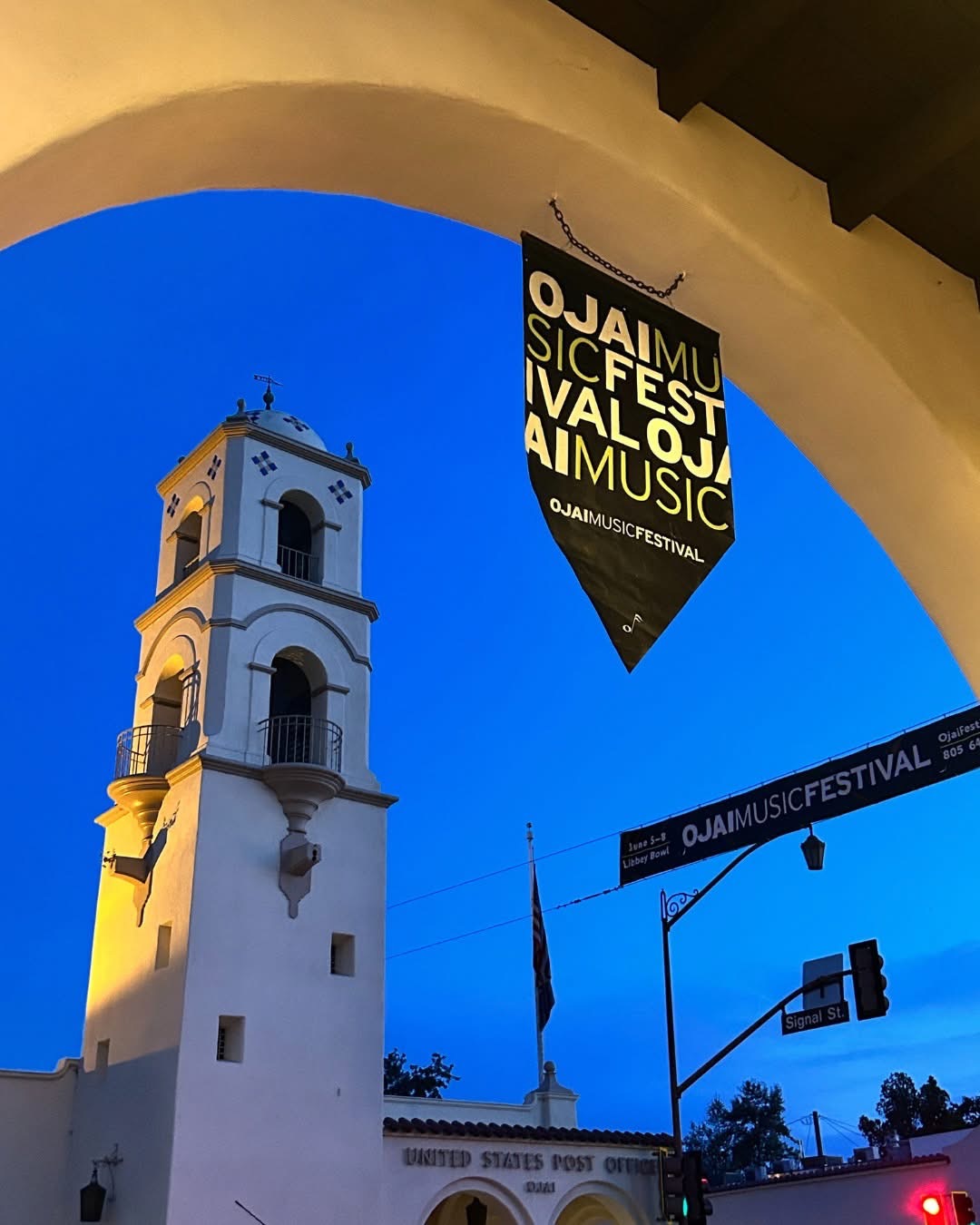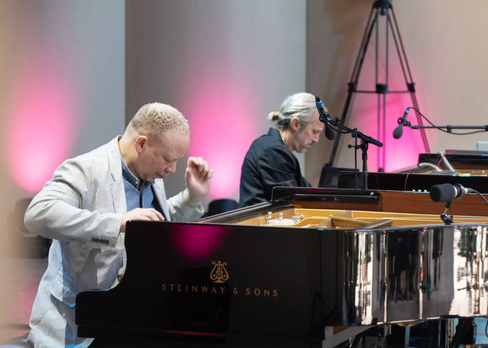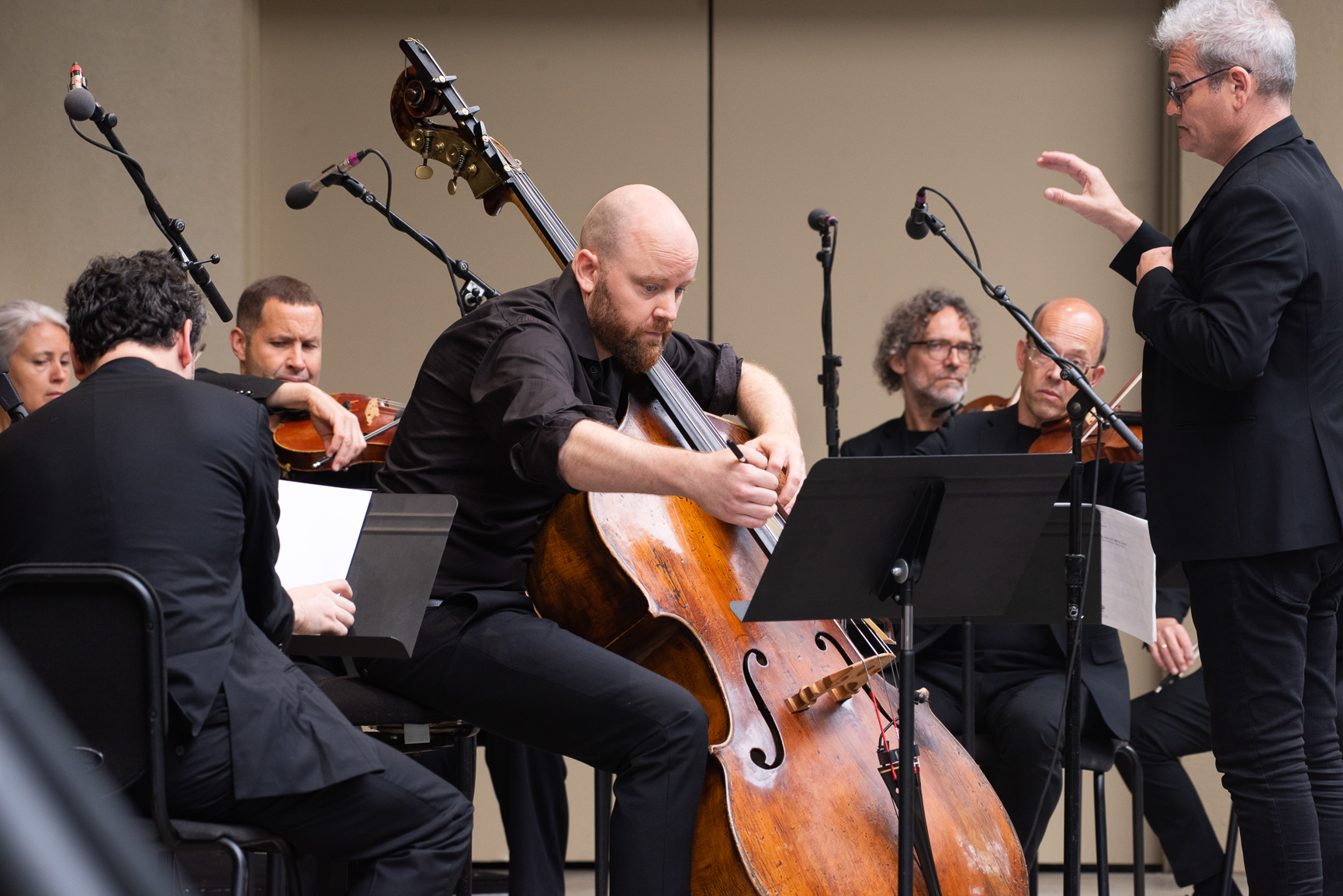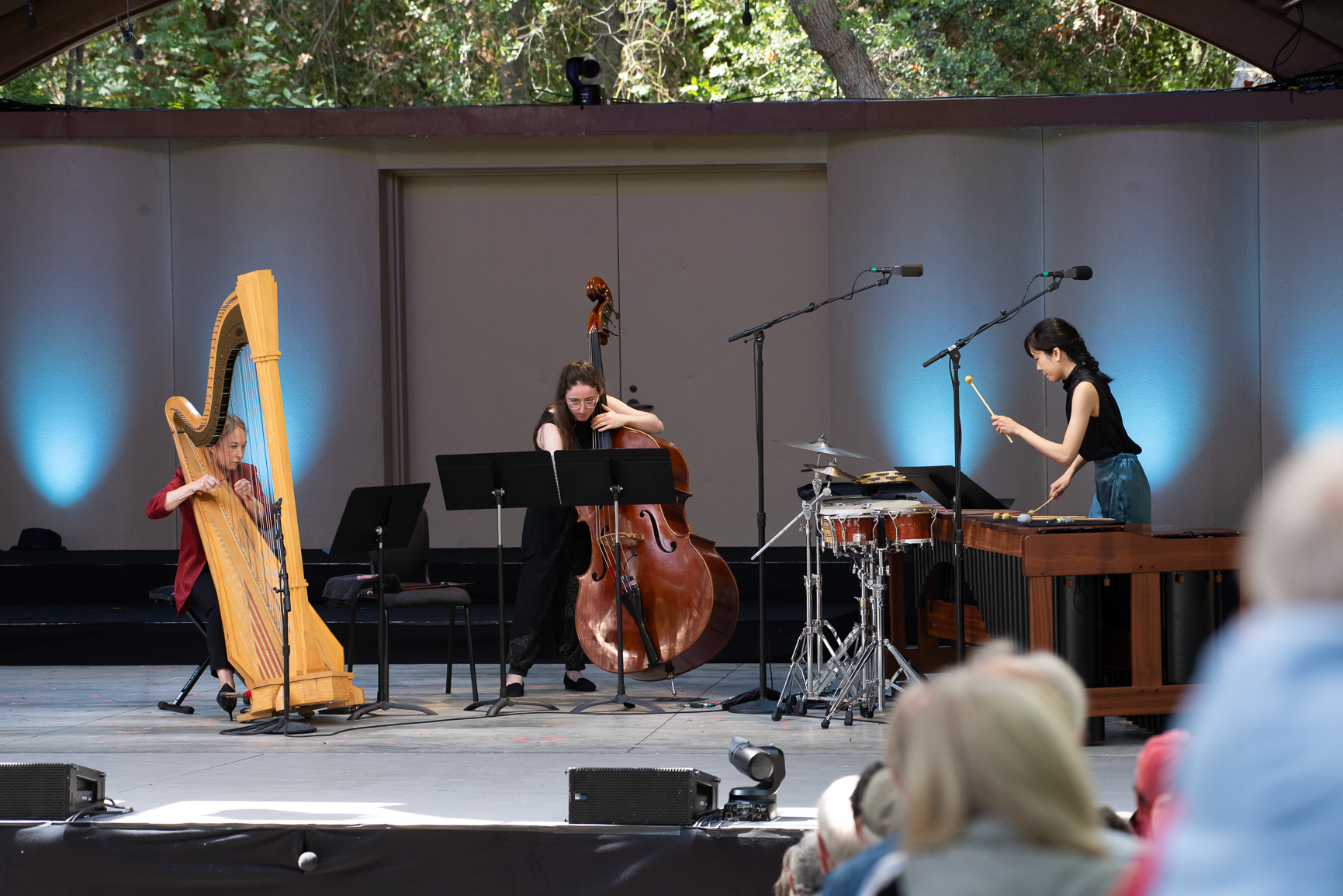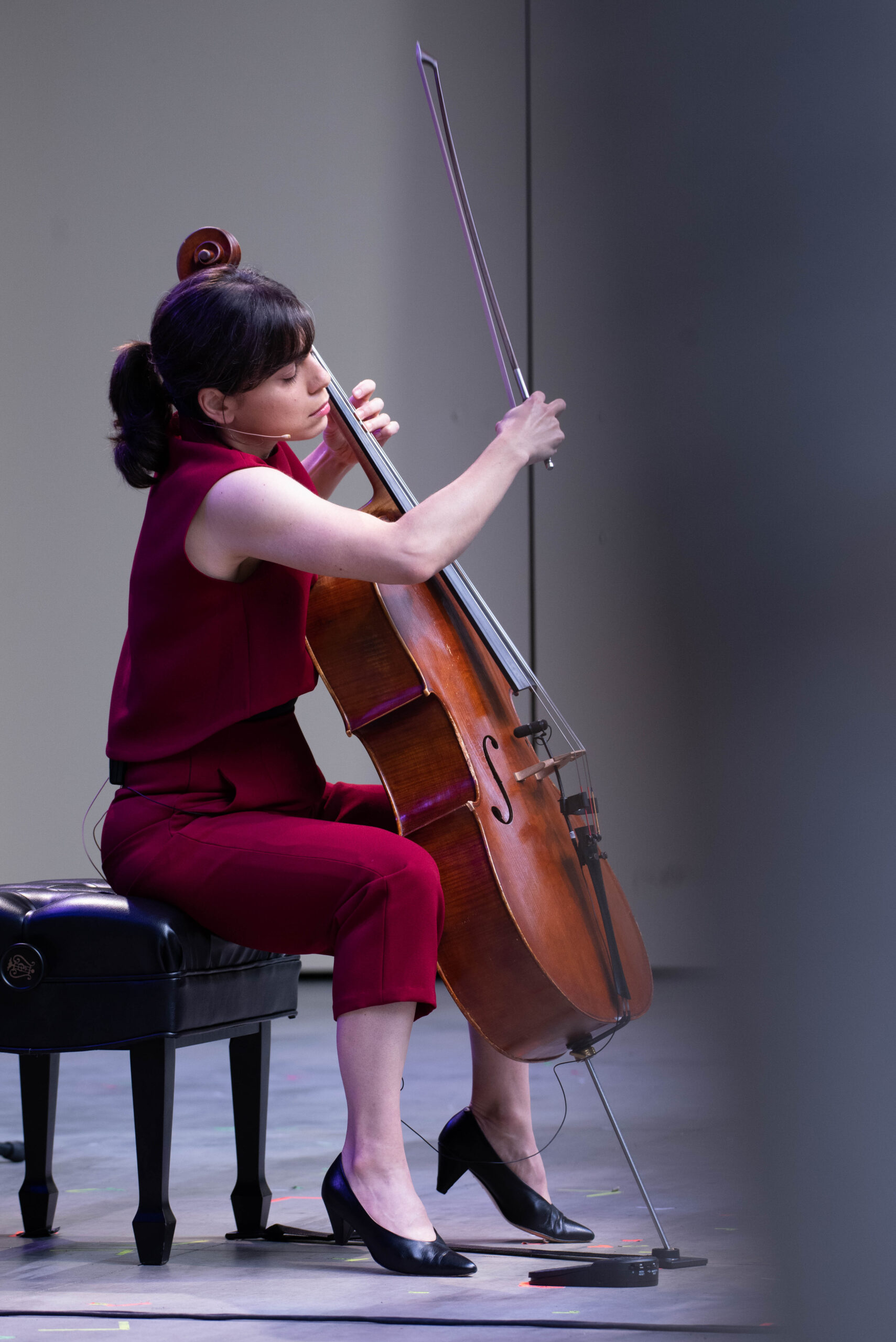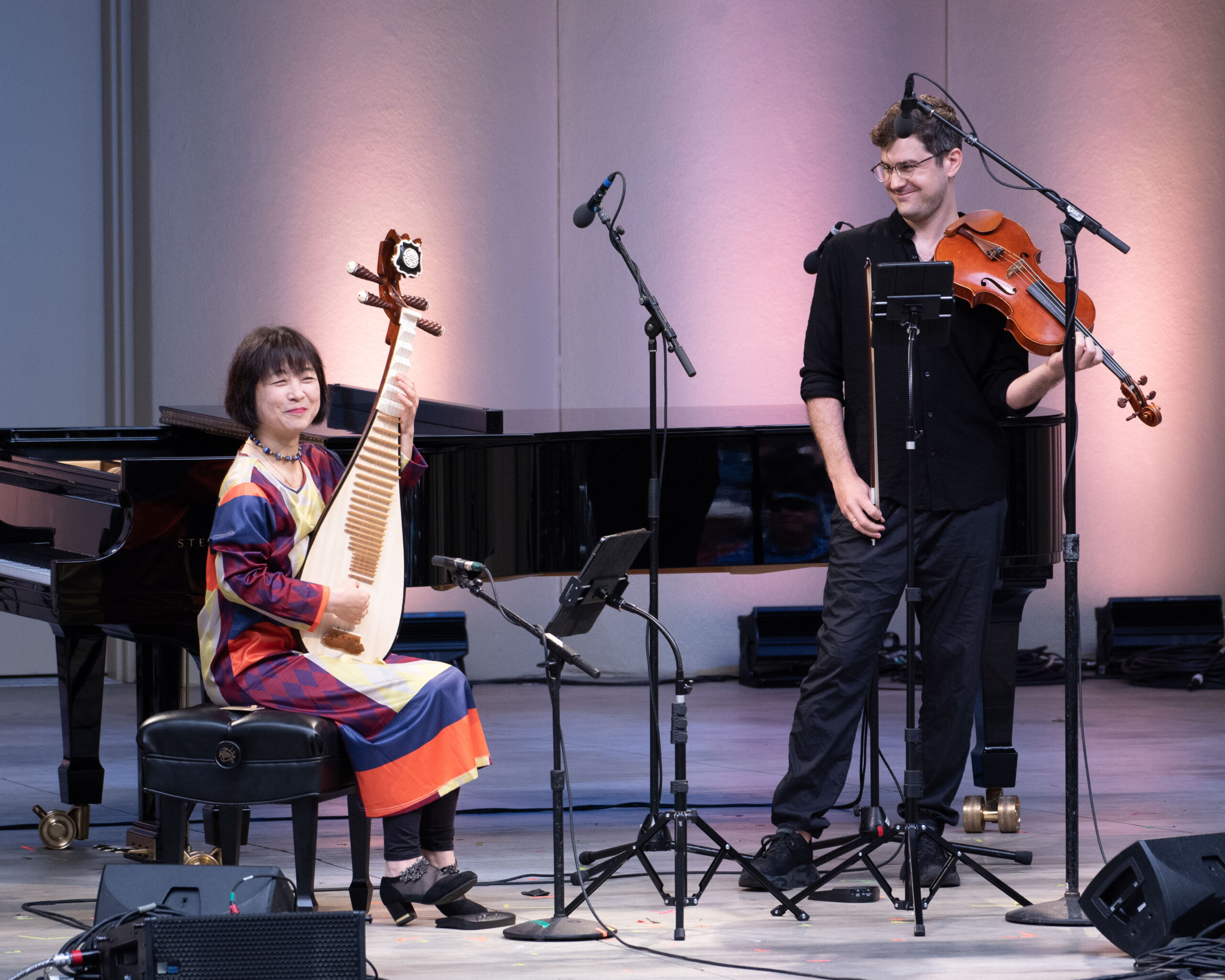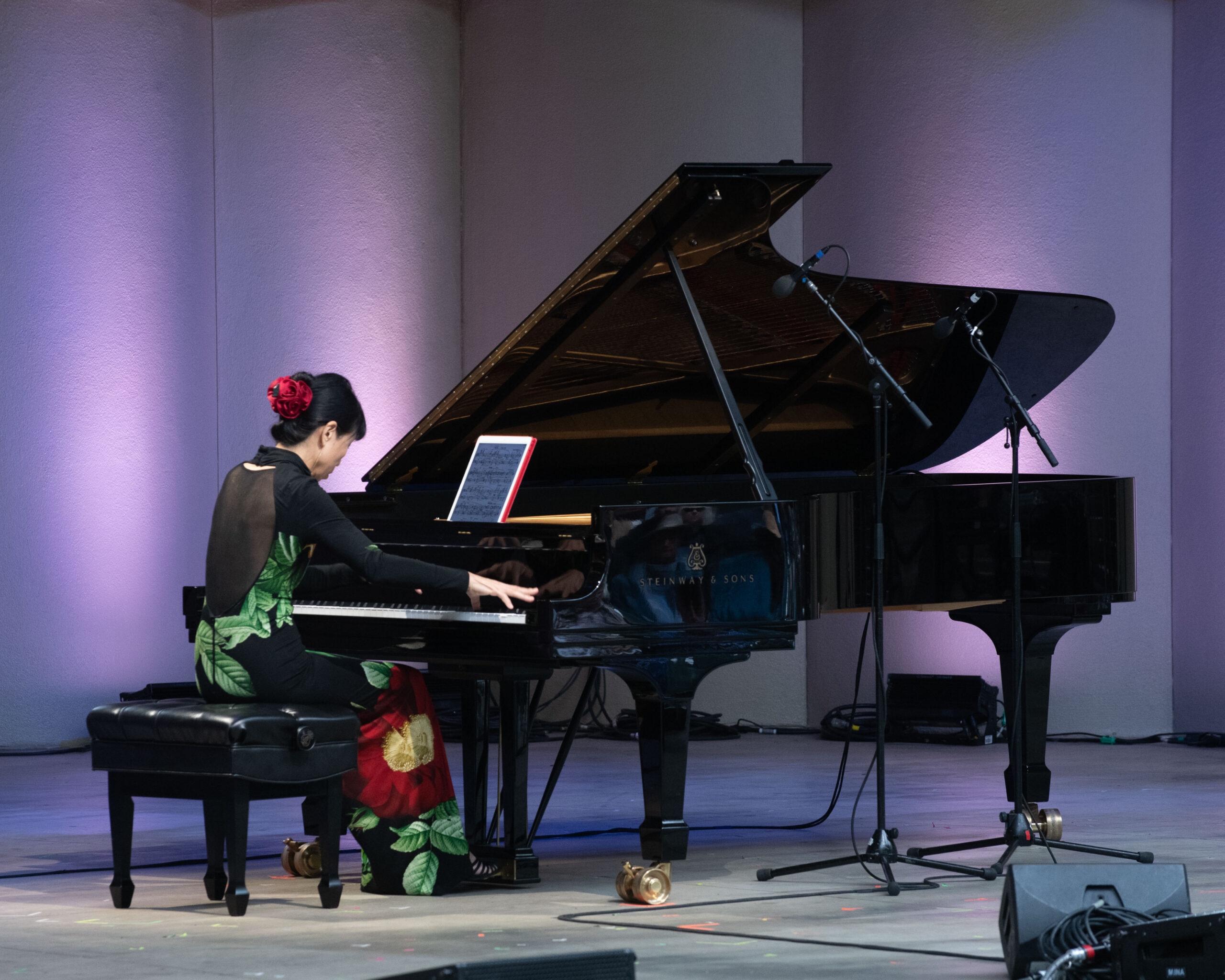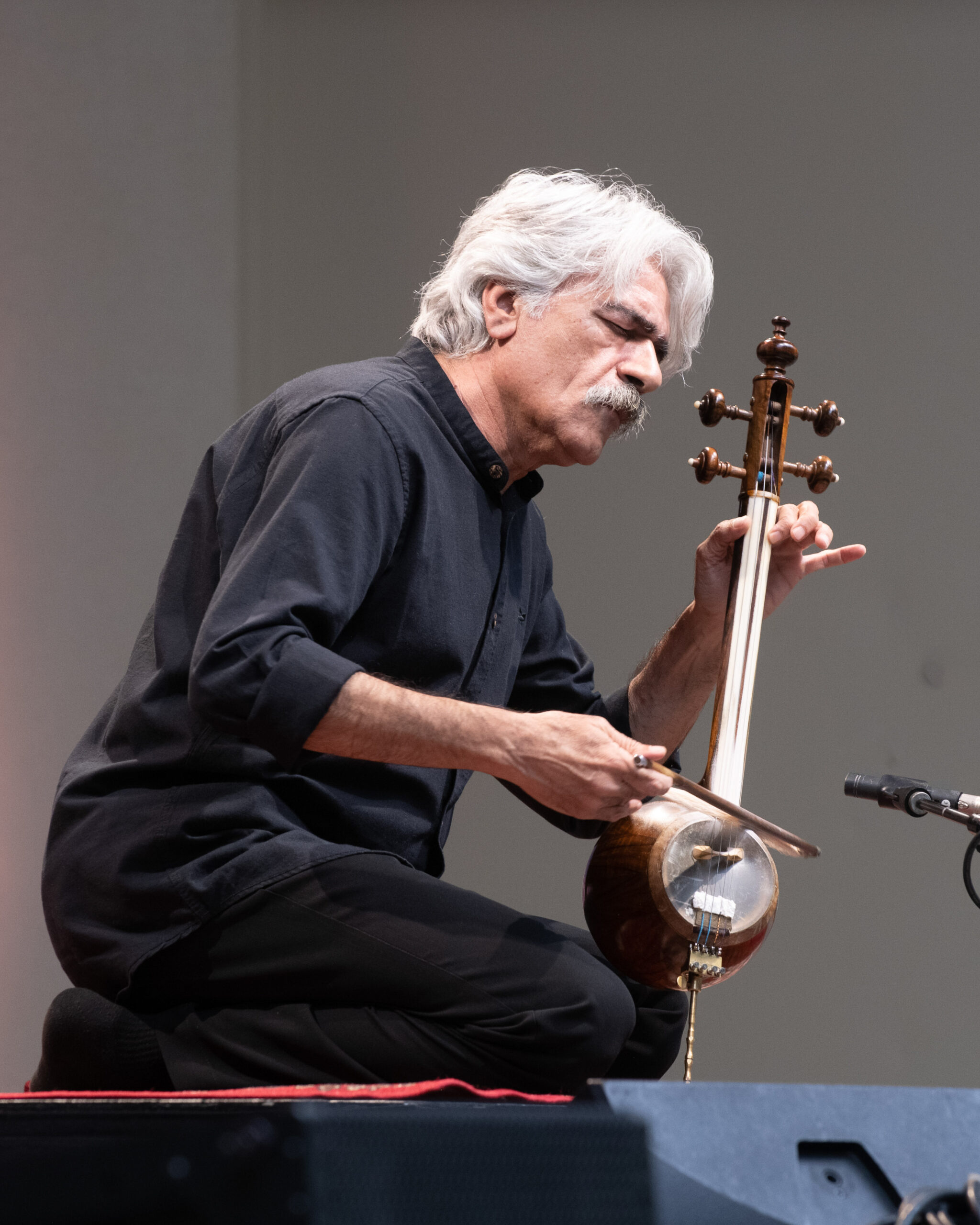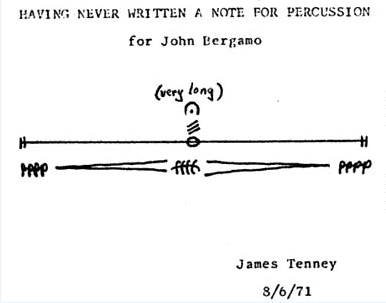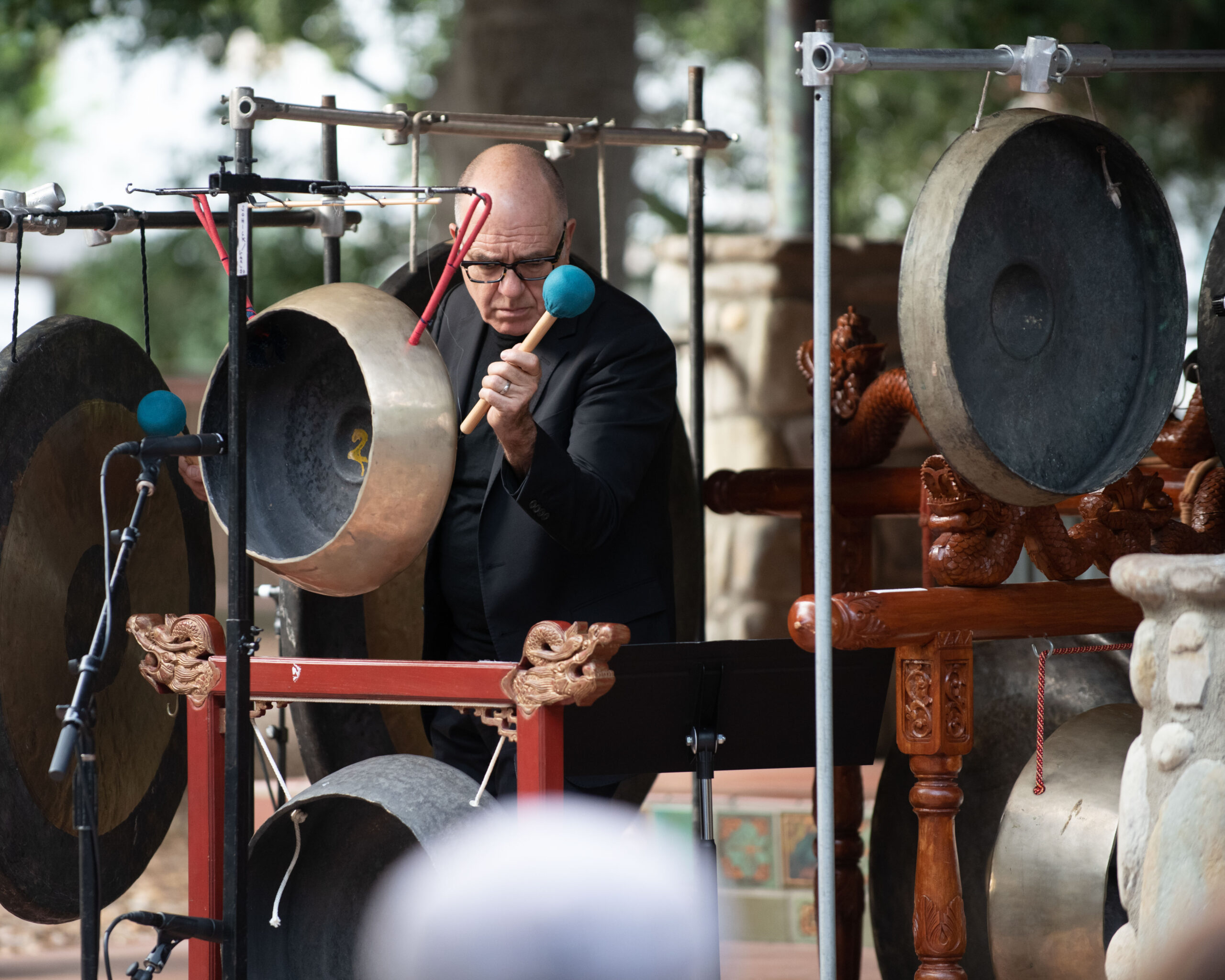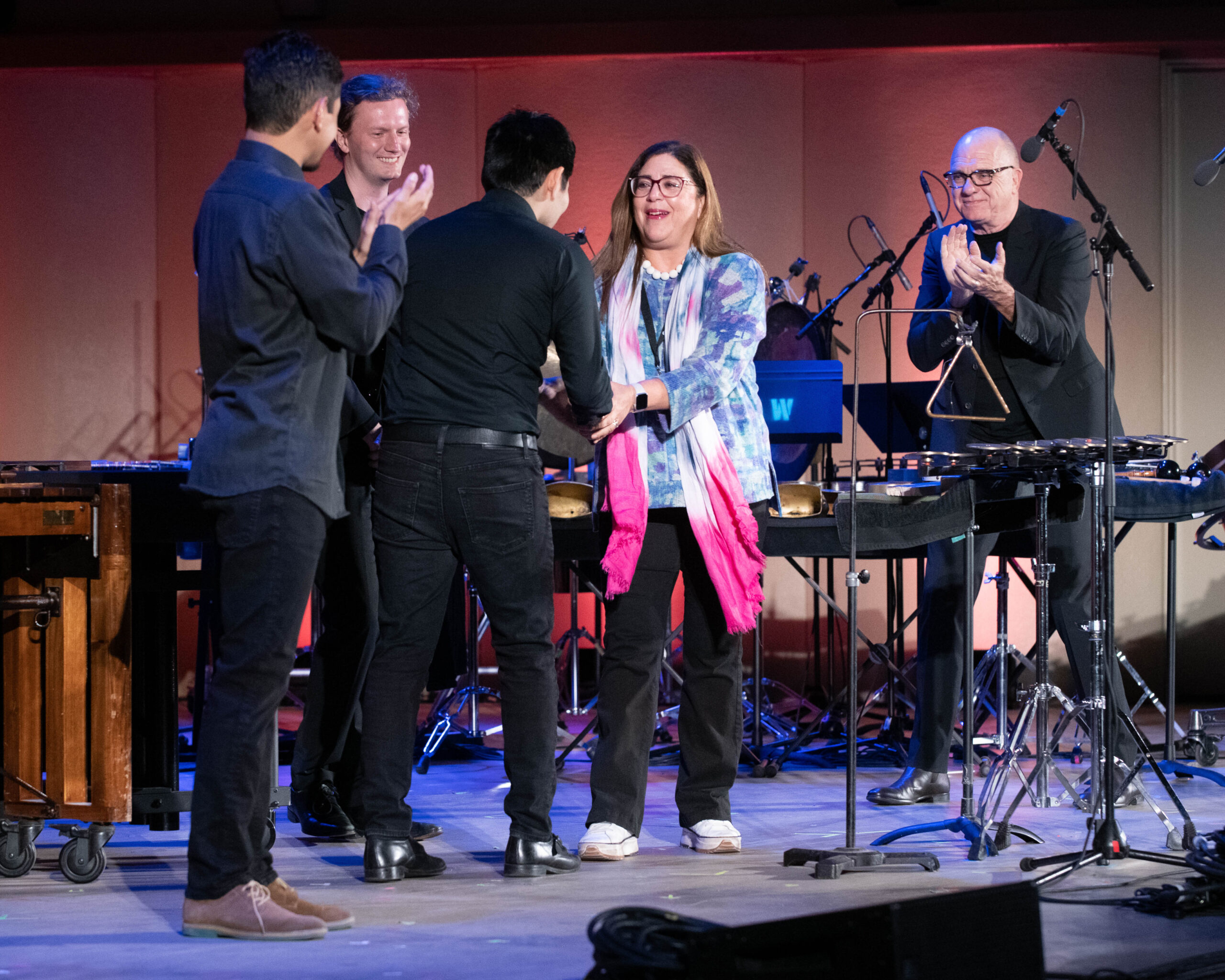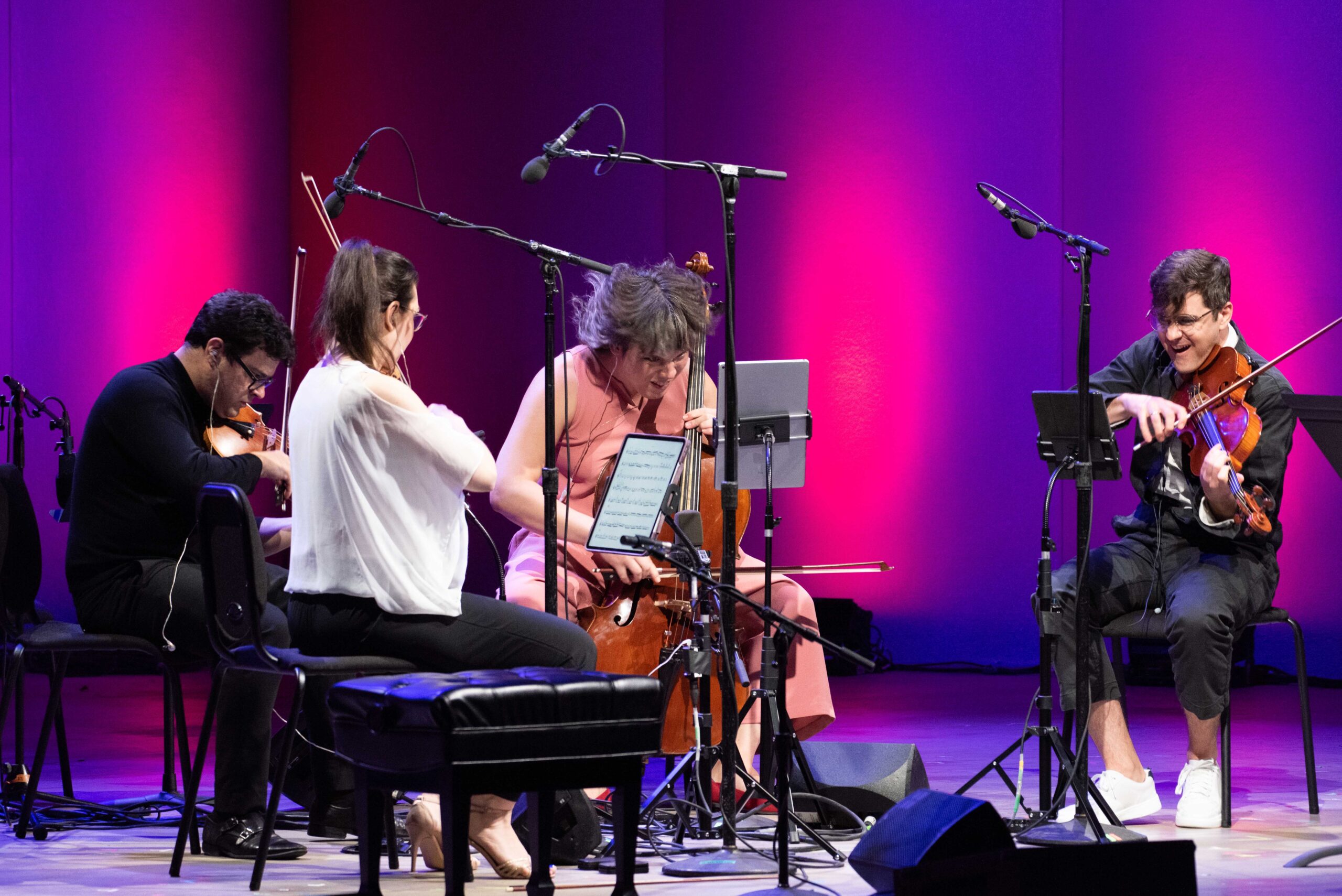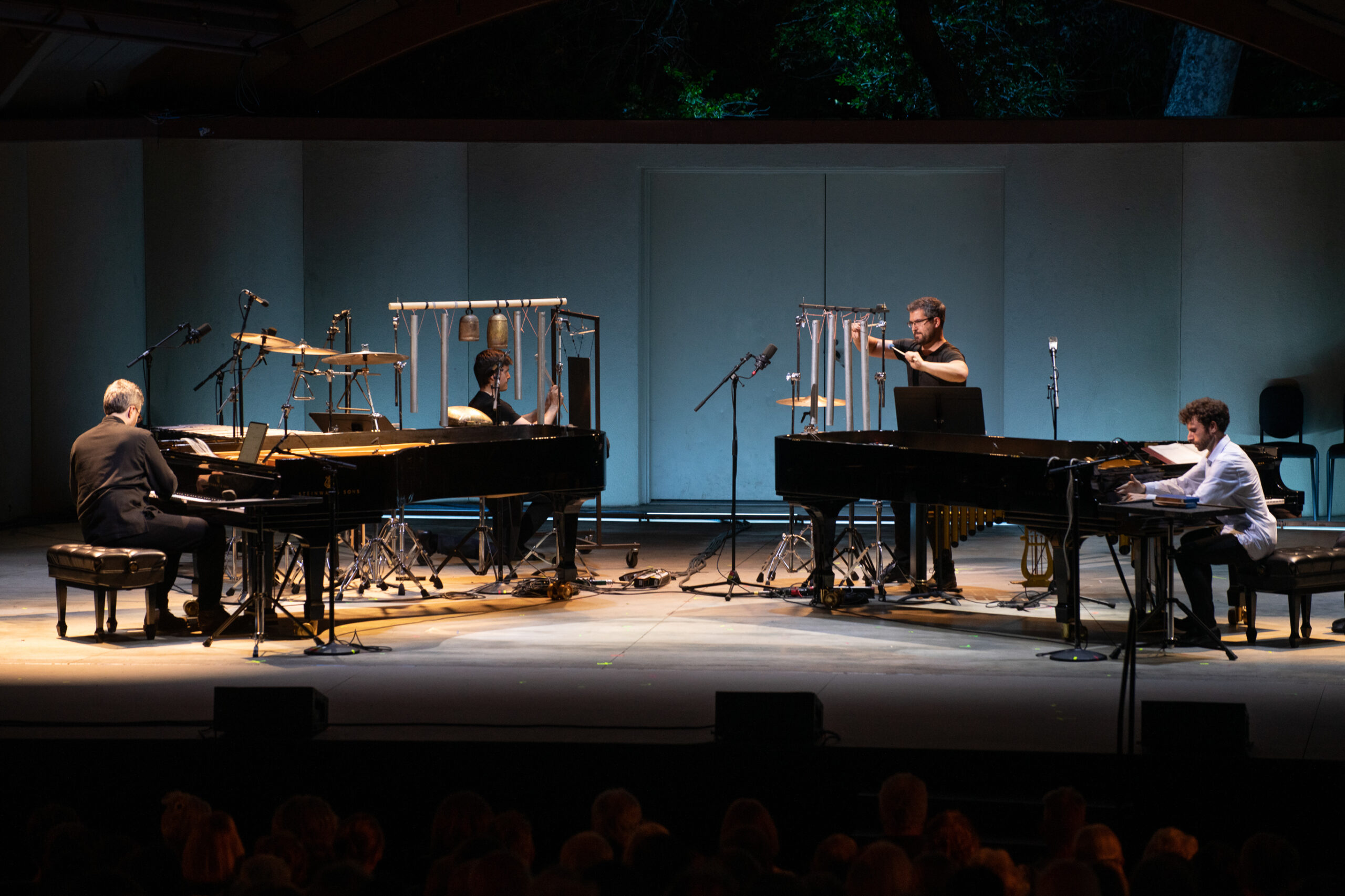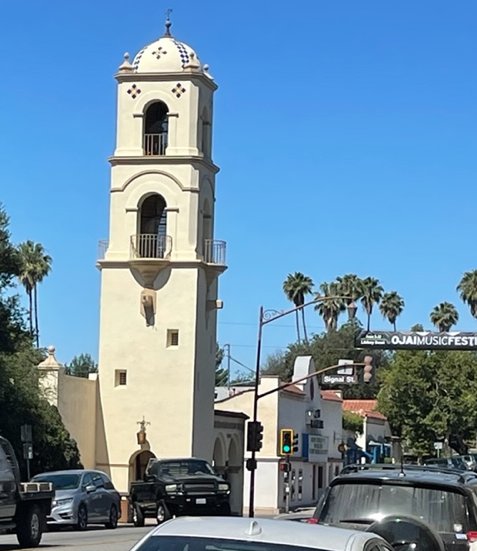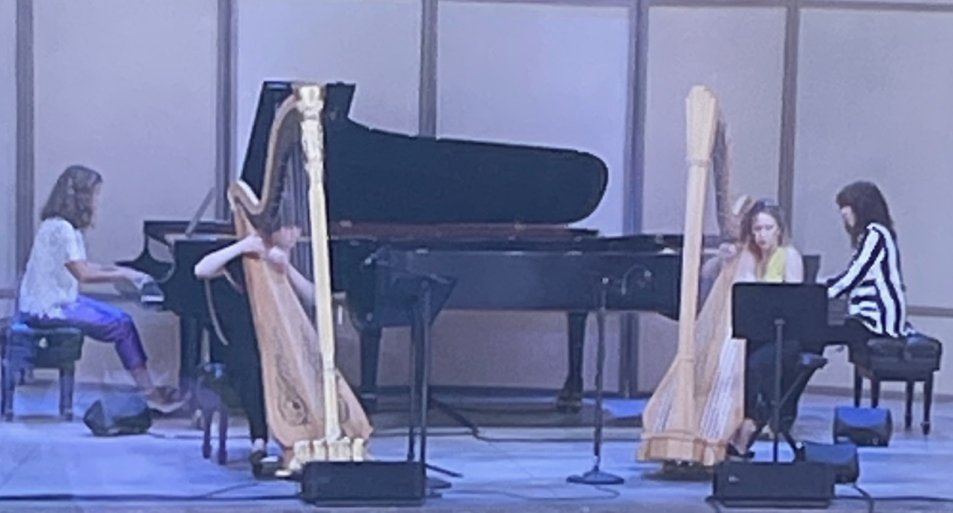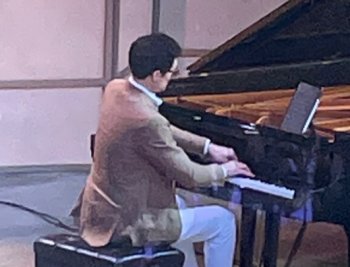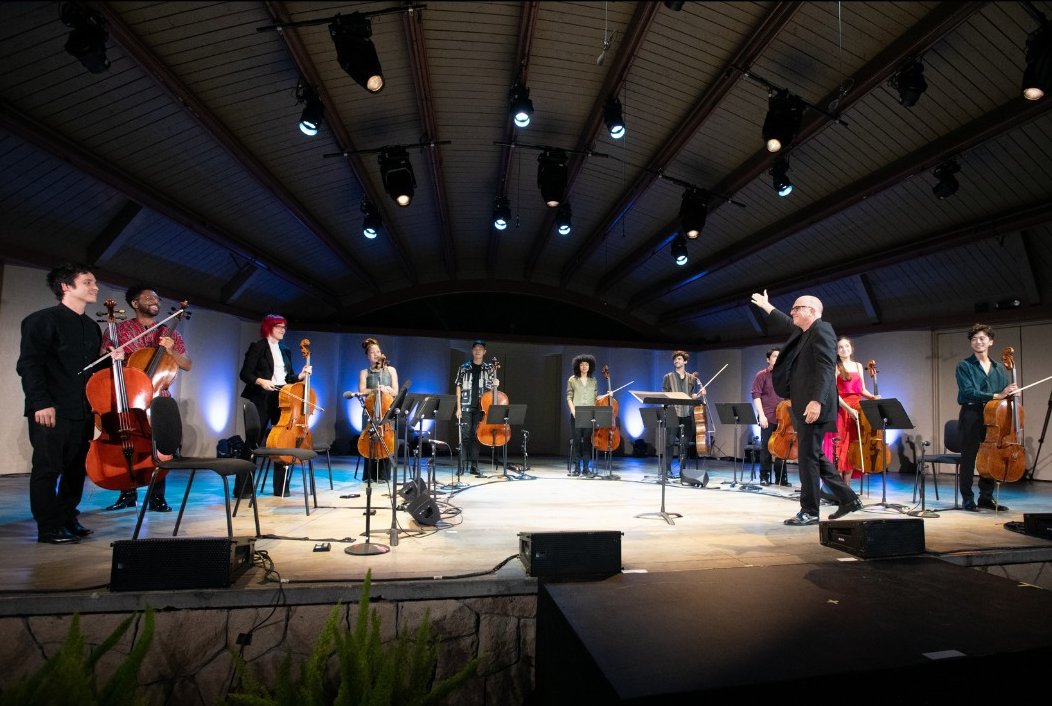
The Friday evening concert was titled The Holy Liftoff, continuing the theme from the morning. There was a solo viola piece by Leilehua Lanzilotti, the USC Cello Ensemble led by Seth Parker Woods, with music by Sofia Gubaidulina, Julius Eastman and Terry Riley. The ever reliable Steven Schick conducted and the JACK Quartet joined with Clare Chase in the final work.
First up was ko‘u inoa by Leilehua Lanzilotti, a composer, violist and interdisciplinary artist based in Hawaii. “ko‘u inoa” means “my name” or “in my name” and is a Hawaiian term freighted with identity, ancestry and community. The piece was inspired by Hawai‘i Aloha, a traditional 19th century Hawaiian anthem. As Lanzilotti explains in the program notes: “Hawai‘i Aloha evokes not only a homesickness for place and sound, but this action of coming together — a homesickness that we’re all feeling right now, where music and human interaction are home.”
ko‘u inoa began with the composer/soloist walking in from offstage playing a low, repeating phrase that was soft and mysterious. Rising tones in this opening created a nice minimalist feel and the timbre of the viola seemed ideally suited to this warmly eloquent music. The texture thickened agreeably as Ms. Lanzilotti double stopped, sounding two notes at once. The piece proceeded as if a natural process was unfolding, understated and beautiful. Optimistic and expressive, the dynamics increased towards the finish without violating the intimate and reserved emotion in the music. The quiet ending was greeting with extended applause. ko‘u inoa and Leilehua Lanzilotti succeeded brilliantly in conveying the sweetness of Hawaiian sensibility in an elegant and intimate viola solo.
Mirage: The Dancing Sun, by Sofia Gubaidulina followed. This was performed by the eight massed strings that were the USC Cello Ensemble, all led Seth Parker Woods of the USC music faculty. The excellent program notes by Thomas May set out the ambitious intentions of the composer: “The late Sofia Gubaidulina’s Mirage: The Dancing Sun, scored for eight cellos, treats sound as spiritual metaphor, evoking the interplay of light and shadow, faith and uncertainty — an expression of her preoccupation with the sacred and the unseen.”
High, squeaky sounds from the upper register of the cello opened Mirage: The Dancing Sun along with some strident pizzicato. Seth Parker Woods played more sustained tones on top of the busy texture, and this established a contrasting and questioning feel. This was followed by lush tutti phrases, lovely in tone and harmony, but with a tinge of sadness that set a contrast with the active opening. Good ensemble playing was on display as the various cello lines began to diverge and intertwine. Woods stayed in a solo role, commenting on the complex phrases coming from the ensemble. The slower tutti passages returned and alternated with active and tense stretches. The cellos were not monolithic and they seemed to act in separate sections of two or three. Now very rapid and chaotic sounds with extremely high notes swirled in an around mid-registers. This was followed by a slower arco section full of warm expression, certainly a expressing a convincing contrast between the forces of light and dark. The dynamics and tempo increased as the cellos soared upward to another section of rapid and chaotic notes. A sudden decrescendo, followed by silence, completed Mirage: The Dancing Sun. Much applause followed, not least for the discipline and technique of the USC Cello Ensemble. This was a challenging piece, ably performed as part of an important music festival.
The Holy Presence of Joan d’Arc, by Julius Eastman followed and the USC Cello Ensemble was augmented by two additional players. Julius Eastman grew up singing in church, attended the Curtis Institute and by the 1970s was a significant figure in the New York Minimalist scene. Sadly, Eastman died penniless and alone in 1990; he was just 49 years old. His music has enjoyed something of revival, sparked by the efforts of composer Mary Jane Leach, who has worked tirelessly to collect and organize his existing scores. Seth Parker Woods was instrumental in bringing Eastman’s Gay Guerilla to the 2022 Ojai Festival in a powerful and memorable performance.
The Holy Presence of Joan d’Arc begins with a series of pulsing declarative tutti phrases from the cellos. There is an ominous feel to this and a single dramatic line of of sustained notes rises above the texture, adding further tension. There is a sense of danger and menace with the edgy, but controlled, playing from the ensemble. The many colors, emotions and contrasts conjured from ten identical cellos was impressive. More tension was added as the piece continued with dissonant and intertwined phrasing, all with that steady pulse underneath. A sudden, expressive cello solo was heard followed by faster tempo and more insistent passages. The pulsating and menacing sections seem to alternate and contend with slower, more reflective stretches. There is a brief Grand Pause, then a final cascade of more chaotic sounds. The piece concludes with a quietly gradual slowdown that leads to a long sustained tone at the finish. All of Eastman’s passion and intensity were on display and this seems the more remarkable as it came from just ten cellos. Much applause followed for the players and the music.
After the intermission, The Holy Lifoff by Terry Riley was the final work on the concert program. This was just one part of a large scale work, still in process. The JACK Quartet and Clare Chase were the performers. The program notes give a clue about what to expect: “Groovy, buoyantly irreverent, and transcendent, The Holy Liftoff reflects what Chase calls ‘a multi-modal way of making music,’ echoing the communal, DIY spirit of Riley’s In C (1964).” Terry Riley, one of the Mount Rushmore figures of American Minimalism, will turn 90 this month and composed this lively piece expressly for Clare Chase. Riley is now living in Japan and could not make the trip to Ojai, but he was connected to the concert by the magic of video streaming. Clare Chase called for the audience to shout out a greeting to him, and this was done with affectionate vigor.
The Holy Liftoff runs to almost a full hour in performance and is a playfully disparate collection of styles, timbres and emotions. There are sections with warm flute passages, stretches that are almost inaudible and parts where independent lines rapidly break out, diverge, then combine again. There are fast and frenetic tempos as well as comfortably placid stretches. One section featured a bright repeating line in the cello with an infectious flute melody joined by a violin in counterpoint. At one point a classic minimalism groove developed, sunny and optimistic. Clare Chase had three flutes at her stand and used them all. She seemed to be playing continuously throughout the entire piece. The JACK Quartet reliably produced lush harmonies as well as rough or squeaky tones, as required.
As the piece barreled to its conclusion, ragged and skittering sounds were heard from in the strings with a strong pulse from the flute. The sound of blowing wind from the sound system evoked a chaotic feel. This was followed by a return to conventional consonance and harmony, even as some chaotic phrases in the strings try to break through. A powerful cadenza full of sharp, spiky notes was issued by the flute and the piece came a sudden finish.
The applause was long and sincere, in no small part for the stamina and endurance of the performers, notably Clare Chase. The Holy Liftoff was a tour de force for the players, a triumph for Terry Riley and a spectacular treat for the Ojai audience.
Photo Credit: Timothy Teague
